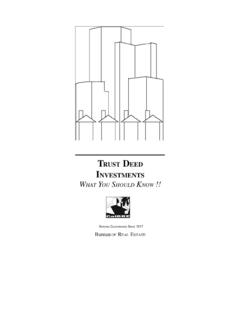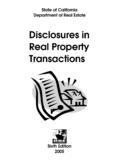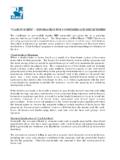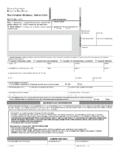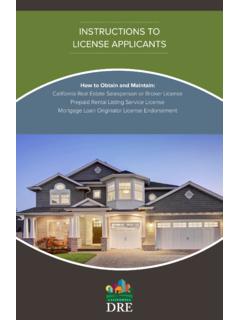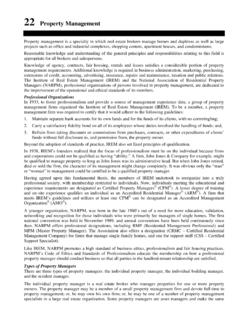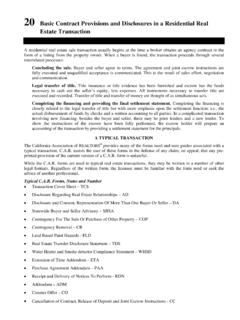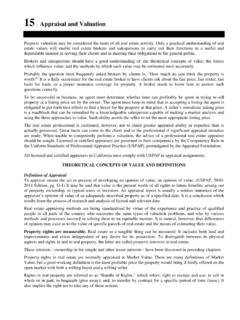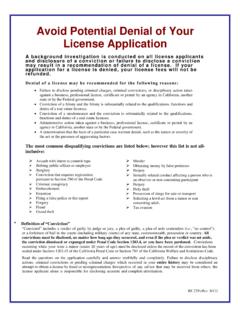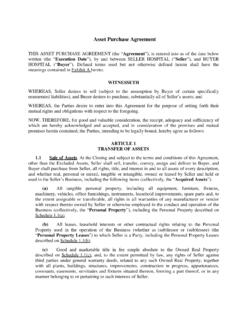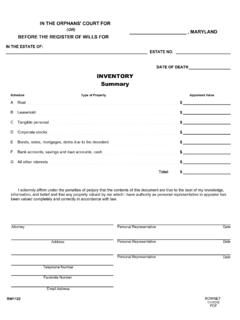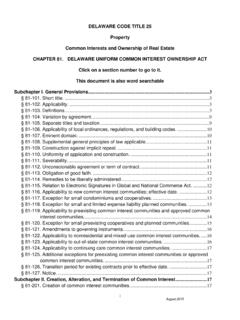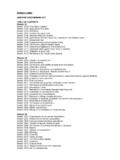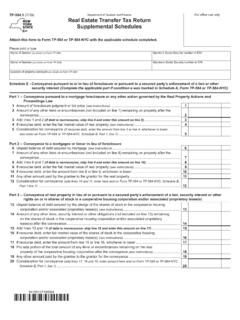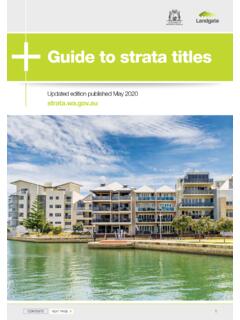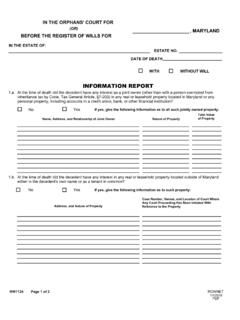Transcription of 5. Title to Real Property
1 5 Title to Real Property In California, the basic principles followed governing Title to real Property were derived from England s Common Law generally implemented by case law known as stare decisis. This term is Latin for "to stand by a decision". Stare decisis is applied as a doctrine to bind a trial court by higher court decisions (appellate and supreme court) that become precedents on a legal question raised in the lower/trial court. Reliance on such precedents is required of lower/trial courts until a higher court changes the rule.
2 California has a 150-year history of development and evolution in the way its courts have applied legal principles regarding the Title to real Property and the conveyance/transfer of the Title . These legal principles also apply to the encumbering of Title to real Property through mortgages or deeds of trust and to provide notice of and to evidence monetary claims against the Title in the form of liens. This history is documented by the enactment of constitutional provisions and statutes and by a long line of case law.
3 In the absence of some specifically applicable constitutional or statutory provisions, the Common Law/case law prevails. CALIFORNIA ADOPTS A RECORDING SYSTEM California was admitted to the Union by the United States on September 9, 1850. One of the first acts of the Legislature of the new state was to adopt a recording system by which evidence of Title or interests in the Title could be collected and maintained in a convenient and safe public place. The purpose of establishing a recording system was to inform persons planning to purchase or otherwise deal with land about the ownership and condition of the Title .
4 This system was designed to protect innocent lenders and purchasers against secret sales, transfers, or conveyances and from undisclosed encumbrances/liens. The purpose of this system is to allow the Title to the real Property to be freely transferable. The California Legislature adopted a recording system modeled after the system established by the original American Colonies. It was strictly an American device for safeguarding the ownership of and the encumbering of land/ Property . Recording of sales, transfers, or conveyances and encumbrances/liens as part of a public record was established to impart constructive notice.
5 This system of recording is known as the Race Recording , or as the Race-Notice Recording statute/law. Actual v. Constructive Notice Actual notice consists of express information of a fact. Constructive notice means notice given by the public records. By means of constructive notice, people are presumed to know the contents of recorded instruments. Publicly recording instruments of transfer/conveyance or to encumber/lien the Title to real Property imparts constructive notice.
6 For example, Civil Code Section 2934 enacted in 1872 states in part, Any assignment of a mortgage and any assignment of the beneficial interest under a deed of trust may be recorded, and from the time the same is filed for record operates as constructive notice of the contents thereof to all . Which Instruments May Be Recorded The Government Code of California provides that, after being acknowledged (executed in front of a Notary Public, or properly witnessed as provided by applicable law), any instrument or judgment affecting the Title to or possession of real Property may be recorded.
7 See Government Code Sections 27201, , 27287, and 27288. The word instrument as defined in Section 27279(a) of the Government Code ..means a written paper signed by a person or persons transferring the Title to, or giving a lien on real Property , or giving a right to a debt or duty. A similar definition is set forth in a historic 19th century case. See Hoag v Howard (1880) 55 Cal. 564-567. The definition of an instrument does not necessarily include every writing purporting to affect real Property .
8 However, the term instrument does include, among others, deeds, mortgages, leases, land contracts, deeds of trust and agreements between or among landowners/ Property owners. Purpose of Recording Statutes The general purpose of recording statutes is to permit (rather than require) the recordation of any instrument which affects the Title to or possession of real Property , and to penalize the person who fails to take advantage of recording. CHAPTER FIVE 52 However, existing law includes examples where recording is required as a predicate to accomplish a defined public policy objective.
9 One such example is Civil Code Section that provides, Where a power to sell real Property is given to a mortgagee, or other encumbrancer, in an instrument intended to secure the payment of money ..[T]the power of sale may be exercised by the assignee of the assignment if duly acknowledged and recorded (emphasis added). Another example is in Business and Professions Code Section regarding perfecting ownership of promissory notes or interests therein. This Section states in part ..the delivery, transfer and perfection shall be deemed complete even if the broker retains possession of the note or collateral instruments and documents, provided that the deed of trust or assignment of the deed of trust or collateral documents in favor of the lender or purchaser is recorded in the office of the county recorder in the county in which the security Property is located, and the note is made payable to the lender or is endorsed or assigned to the purchaser (emphasis added).
10 Because of the recording of instruments of conveyance or encumbrance/lien, purchasers (and others dealing with Title to Property ) may in good faith discover and rely upon the ownership of Title or an interest therein. While the Government Code does not specify any particular time within which an instrument must be recorded, priority of recordation will ordinarily determine the rights of the parties if there are conflicting claims to the same parcel of land/ Property , , the Title thereto or an interest therein.

